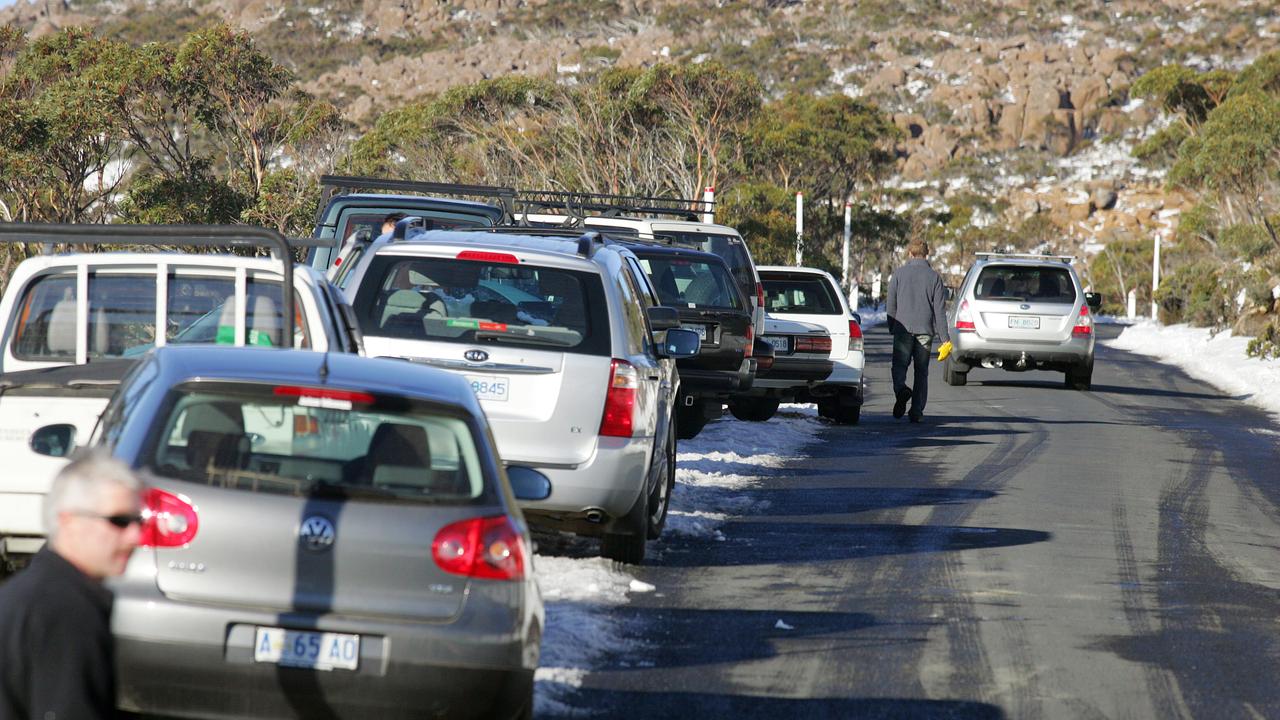Retired Parks ranger says Tas parks must be protected from northern hemisphere mass-tourism
Europe deals with overcrowding due to a surge in tourism, sparking a warning from a retired park ranger who says Tasmania could fall into the same trap. His advice to avoid it.

Tasmania
Don't miss out on the headlines from Tasmania. Followed categories will be added to My News.
A retired Tasmanian Parks and Wildlife ranger has called for urgent action to safeguard the state’s iconic wilderness areas from the pressures of mass tourism, warning that overcrowding could ruin Tasmania’s most precious places.
Ian Marmion, who spent 42 years with Tasmania’s Parks and Wildlife Service, was awarded a Churchill Fellowship to study how national parks in the United States and Canada manage their high visitation numbers.
His seven-week trip revealed stark contrasts in funding, planning, and resources between those parks and Tasmania’s.
“Something we need to work towards is having agreed visitation levels for different areas to ensure minimal impact on the environment, animals, and plants,” Mr Marmion said.
“But we also need to consider the social side — how people want to feel when they visit our parks. Protecting the peacefulness of that experience is really important.”

Mr Marmion noted a 300 per cent increase in Chinese tourists to Tasmania between 2000 and 2018, sparking the need to explore international strategies for sustainable tourism.
He highlighted the risks posed by social media, which can turn natural locations into viral sensations overnight, making it difficult to plan for and control crowds.
“Tourism is obviously fantastic for the state’s economy, but there needs to be some control so the experience isn’t destroyed,” Mr Marmion said.
“We’re seeing places in Europe become avoided because the overcrowding is so bad, and that’s a real risk here if we don’t manage visitation carefully.”
Tasmania’s most popular destinations, including Cradle Mountain, Bruny Island, Mt Amos and the historic town of Richmond, have become major drawcards.
The latest Tasmanian Visitor Survey revealed 1,301,600 visitors to the state in the year to June, contributing $3.478 billion to the economy.

Mr Marmion suggested implementing policies such as capping visitation to sensitive areas and conducting a statewide survey to identify ecosystems and sites requiring the highest levels of protection, including fragile Aboriginal and historical sites where damage or “souvenir-taking” is a concern.
Other strategies that could be implemented include incorporating one-way flows of vehicle and pedestrian traffic, and temporary or permanent closures of some parks or areas of parks to allow rehabilitation.
“Some areas may need to be completely off-limits to tourism,” Mr Marmion said.
“It’s vital we establish a baseline to identify which areas, animals, rare plants, and breeding sites need the strongest protections.”
Mr Marmion hopes more extreme control measures – such as tourist ballots or permits to enter parks or climb mountains, timed, staggered entry for vehicles to enter a National Park and restrictions on how long you can stay in a Park – won’t have to be implemented in Tasmania.
“My view is that we need to be prepared for large numbers as visitation from China and other countries steadily increases again now we are post Covid.”
Despite these concerns, Mr Marmion remains a strong supporter of tourism and acknowledges its critical role in Tasmania’s economy, emphasising the importance of balancing growth with preservation.
“As long as it is controlled and we’re not, you know, killing the goose that laid the golden egg, then I am a supporter of tourism. I think most Parks staff are, we want to share these amazing places.”
eleanor.dejong@news.com.au
More Coverage
Originally published as Retired Parks ranger says Tas parks must be protected from northern hemisphere mass-tourism








